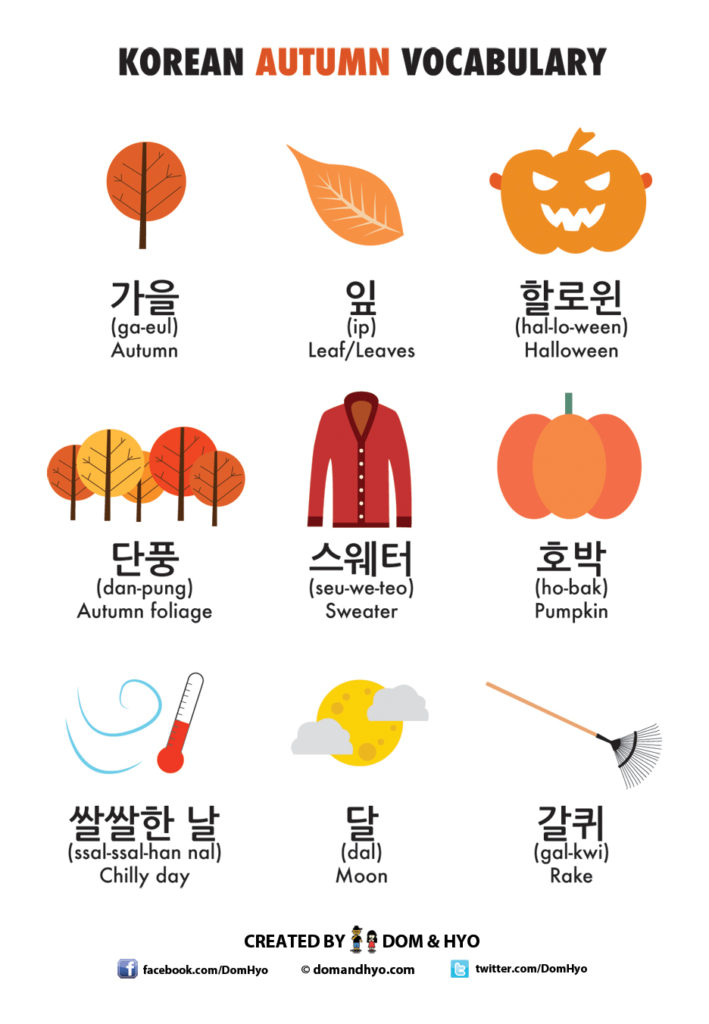

A reformulated list was published posthumously in 1971. Subsequently, it was reduced to 207, and reduced much further to 100 meanings in 1955. Starting in 1950 with 165 meanings, his list grew to 215 in 1952, which was so expansive that many languages lacked native vocabulary for some terms. He then used the fraction of agreeing cognates between any two related languages to compute their divergence time by some (still debated) algorithms. To be able to compare languages from different cultures, he based his lists on meanings he presumed would be available in as many cultures as possible. Using vocabulary lists, he sought to understand not only change over time but also the relationships of extant languages.
KOREAN VOCAB FULL
Presentation For further information, including the full final version of the list, read the Wikipedia article: Swadesh list.Īmerican linguist Morris Swadesh believed that languages changed at measurable rates and that these could be determined even for languages without written precursors. Only Standard Seoul Korean, the official dialect of both North and South Koreas, is taken into account. This is a Swadesh list of words in Korean, compared with that of English. See also: Appendix:Middle Korean Swadesh list Handbook of Korean Vocabulary: An Approach to Word Recognition and Comprehension. Modern Korean Grammar: A Practical Guide. Using Korean: A Guide to Contemporary Usage.

Sino-Korean words borrowed from Sino-Japanese are used only in Korean and Japanese, not in Chinese. Procedure (for) process (of) steps proceedings Marital compatibility well-suited well-matched They are not used in China, Japan, nor Vietnam. These words below were created in Korea using Chinese characters. Words created in Korea using Chinese characters Sino-Korean words borrowed directly from Chinese come mainly from Chinese classics, literature, and colloquial Chinese.
KOREAN VOCAB FREE
This list is incomplete you can help by adding missing items. Sejong Korean vocabulary learning app is a free learning app developed by King Sejong Foundation for elementary and intermediate Korean learners all over. Sino-Korean words may be written either in the Korean alphabet, known as Hangul, or in Chinese characters, known as Hanja. Additionally, Korean numerals can be expressed with Sino-Korean and native Korean words, though each set of numerals has different purposes. Īll Korean surnames and most Korean given names are Sino-Korean. Sino-Korean words are typically used in formal or literary contexts, and to express abstract or complex ideas. Sino-Korean words constitute about 70 to 80 percent of South Korean vocabulary, the remainder being native Korean words and loanwords from other languages, such as Japanese and English to a lesser extent. By contrast, North Korean policy has called for many Sino-Korean words to be replaced by native Korean terms. In the contemporary era, Sino-Korean vocabulary has continued to grow in South Korea, where the meanings of Chinese characters are used to produce new words in Korean that do not exist in Chinese. Ultimately, the majority of Sino-Korean words were introduced before 1945, including Sino-Japanese words themselves that were introduced to Korea during Japanese Occupation. Sino-Korean words remained popular during the Goryeo and Joseon periods. Additionally, the government changed all official titles and place names in the country to Sino-Korean. During this time, male aristocrats changed their given names to Sino-Korean names. While Sino-Korean words were widely used during the Three Kingdoms period, they became even more popular during the Silla period. The use of Chinese and Chinese characters in Korea dates back to at least 194 BCE. 3.2 Words created in Korea using Chinese characters.


 0 kommentar(er)
0 kommentar(er)
